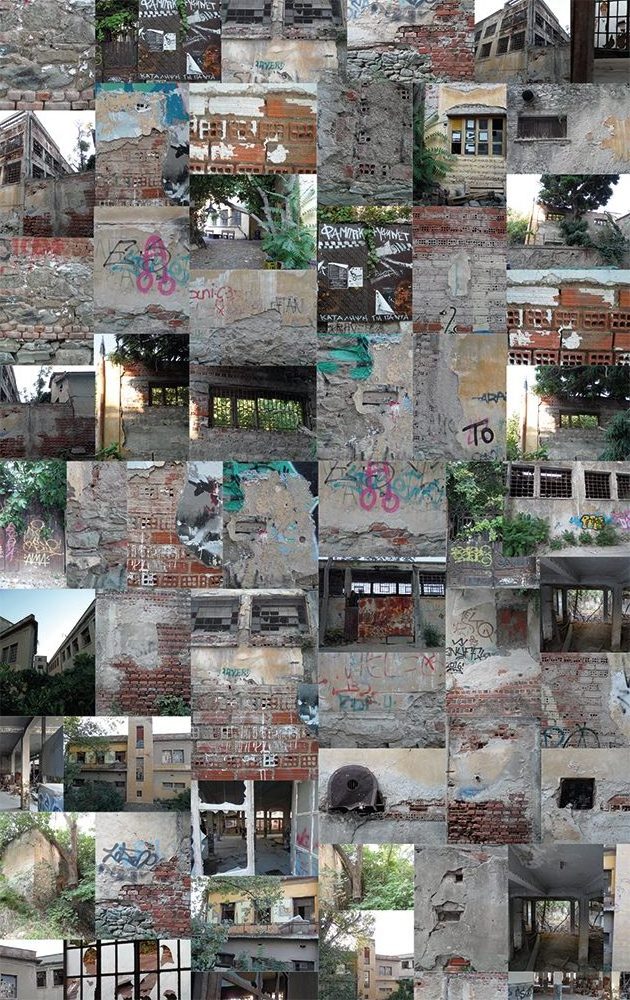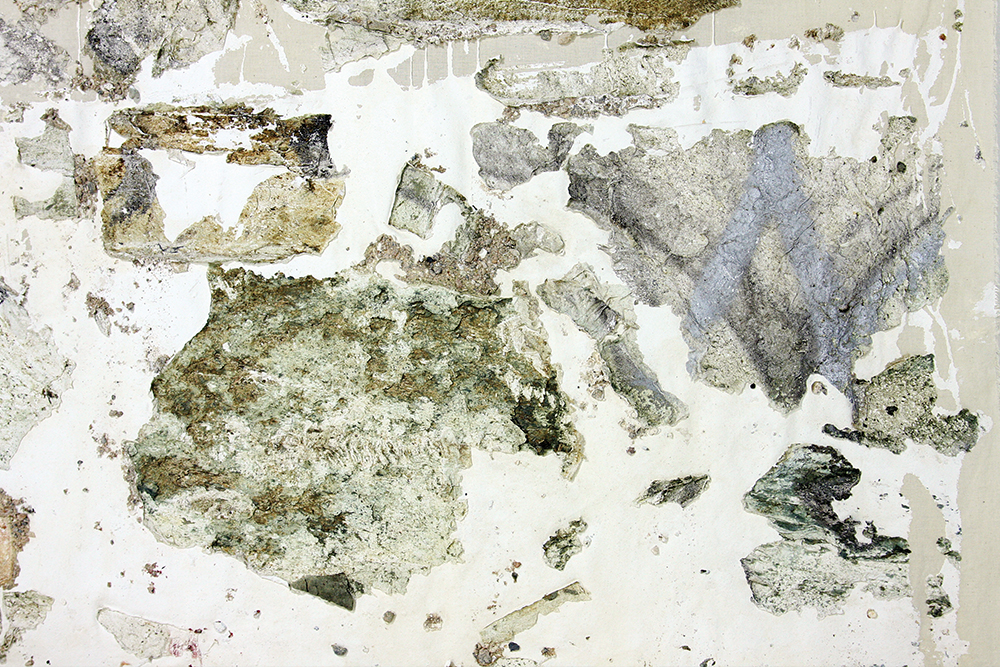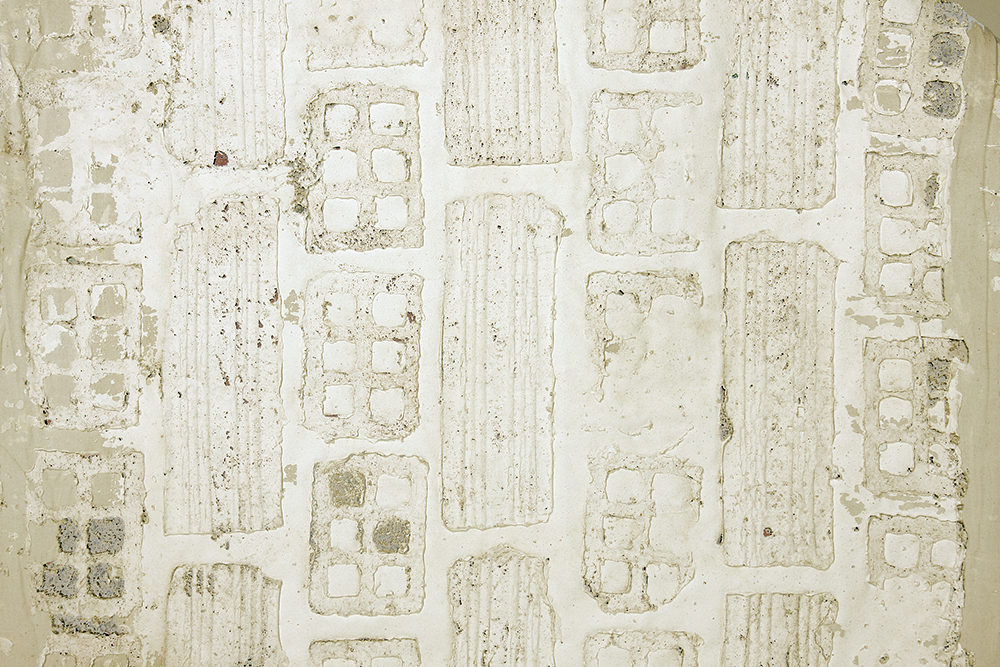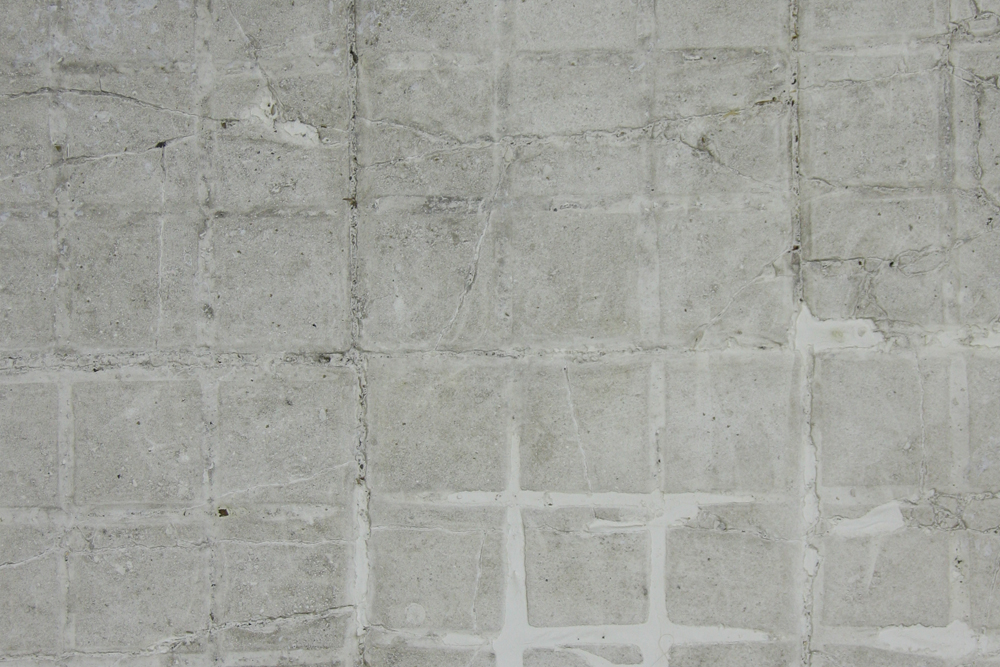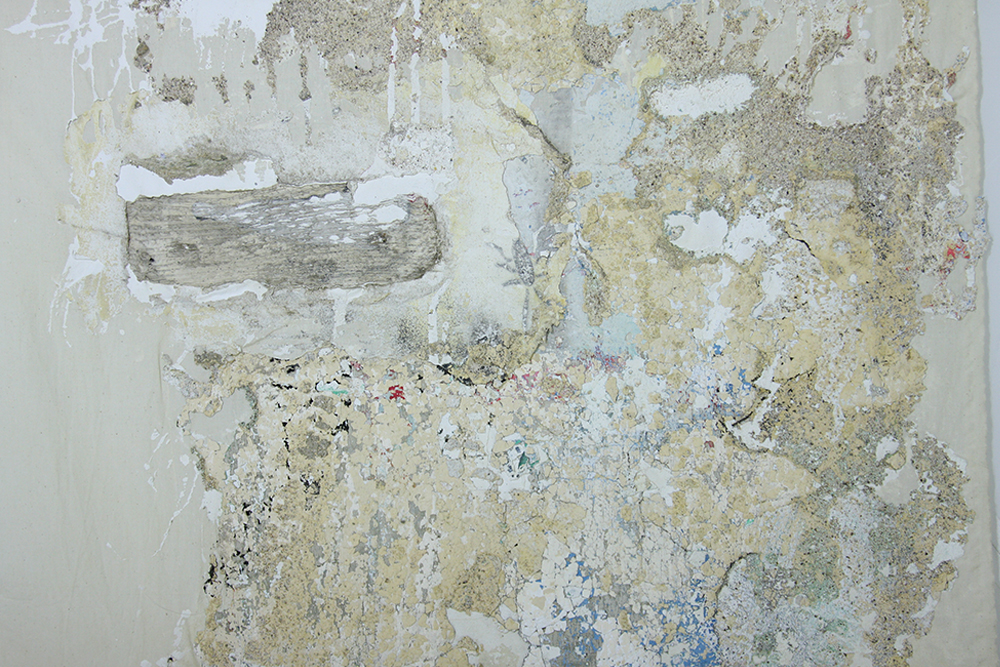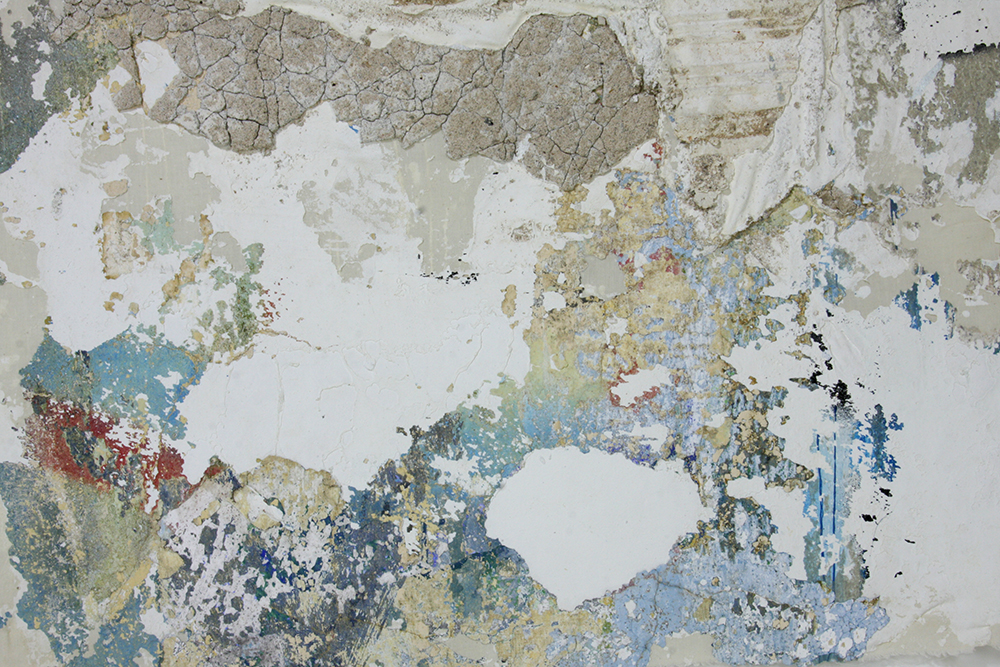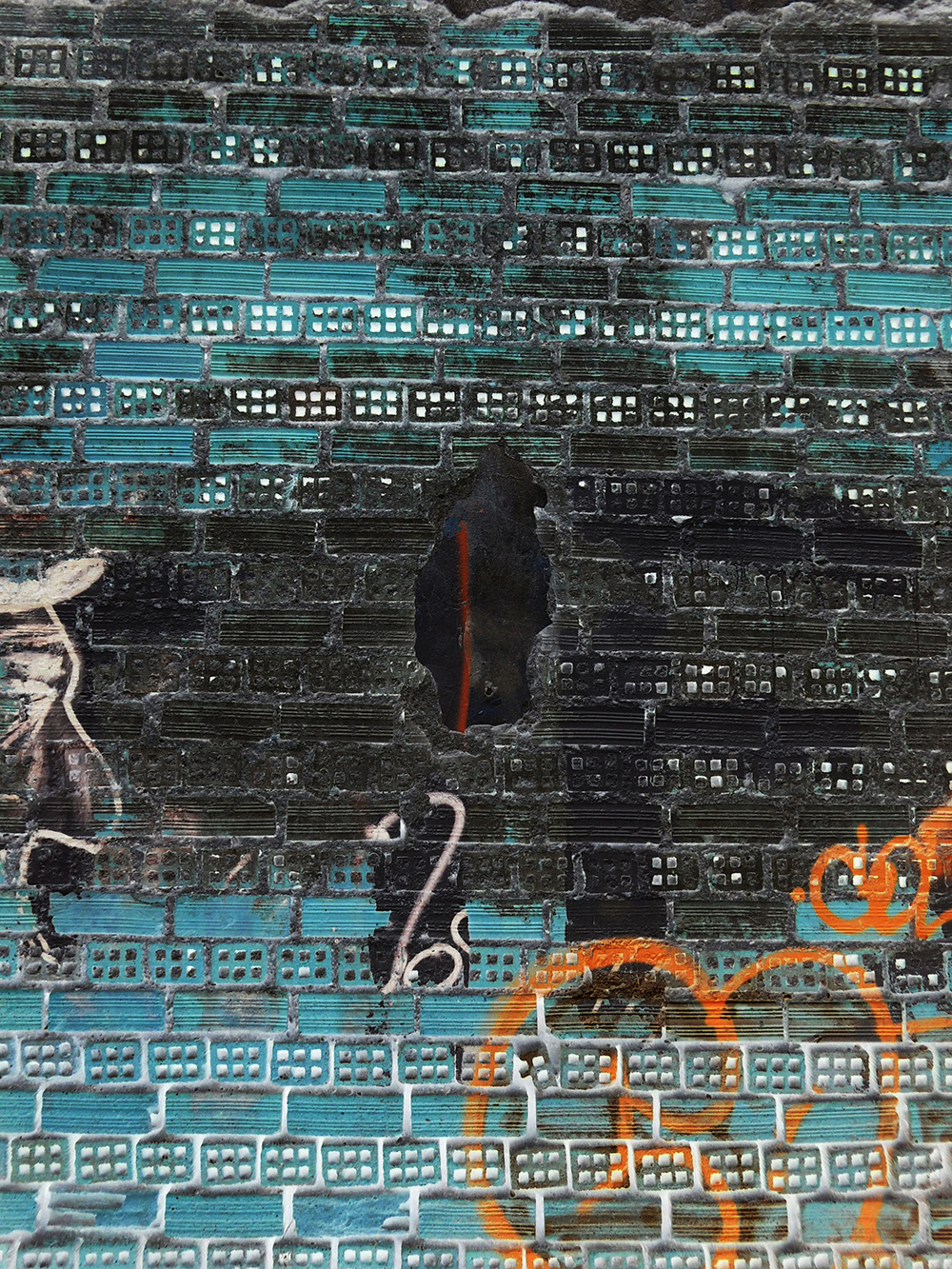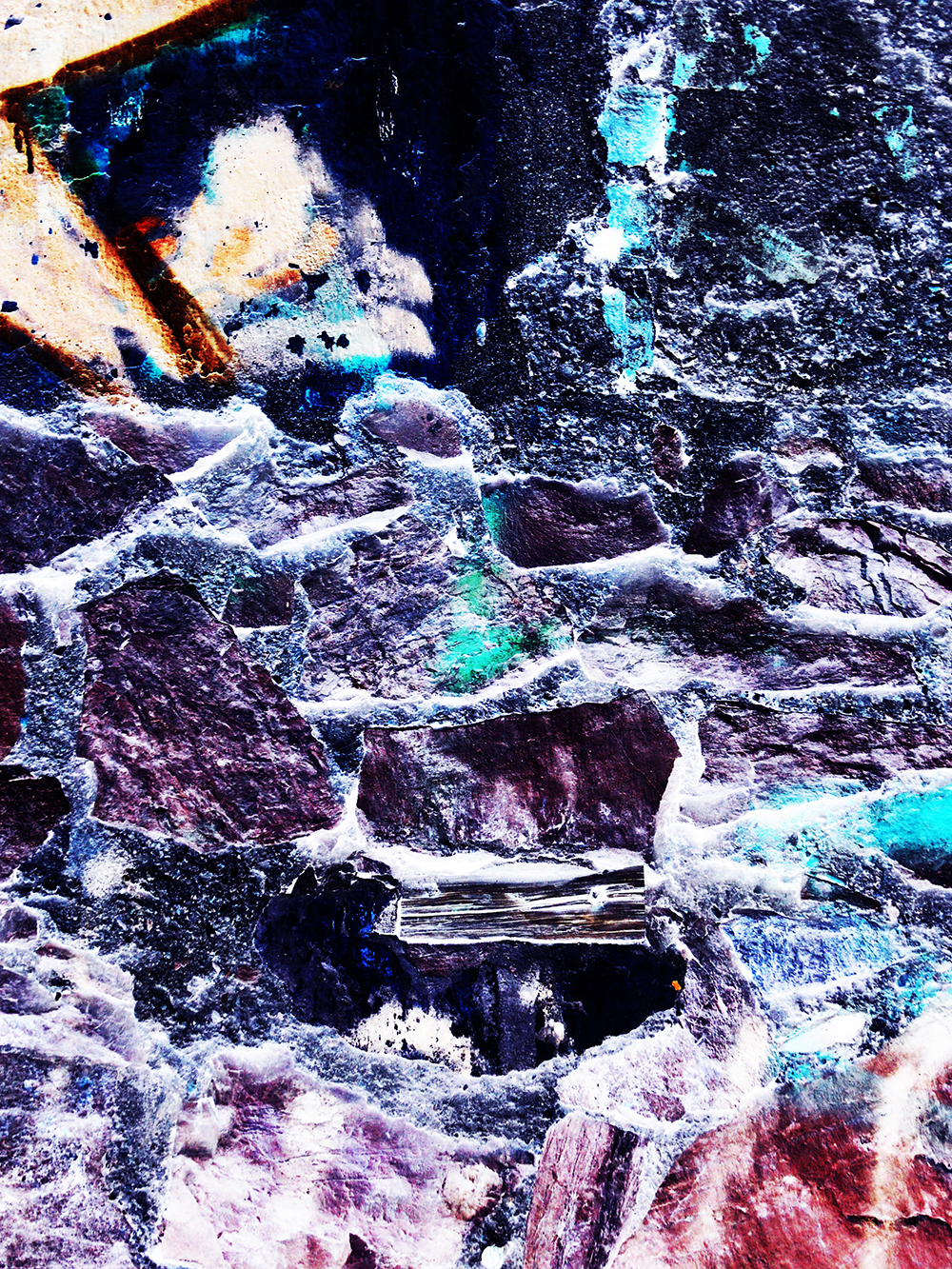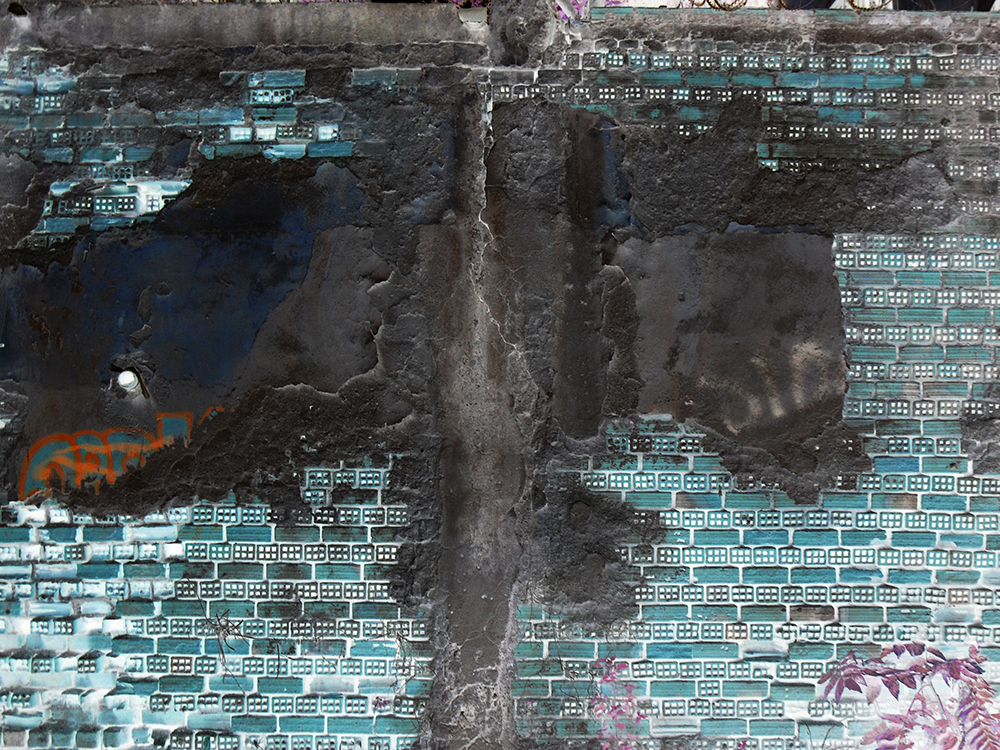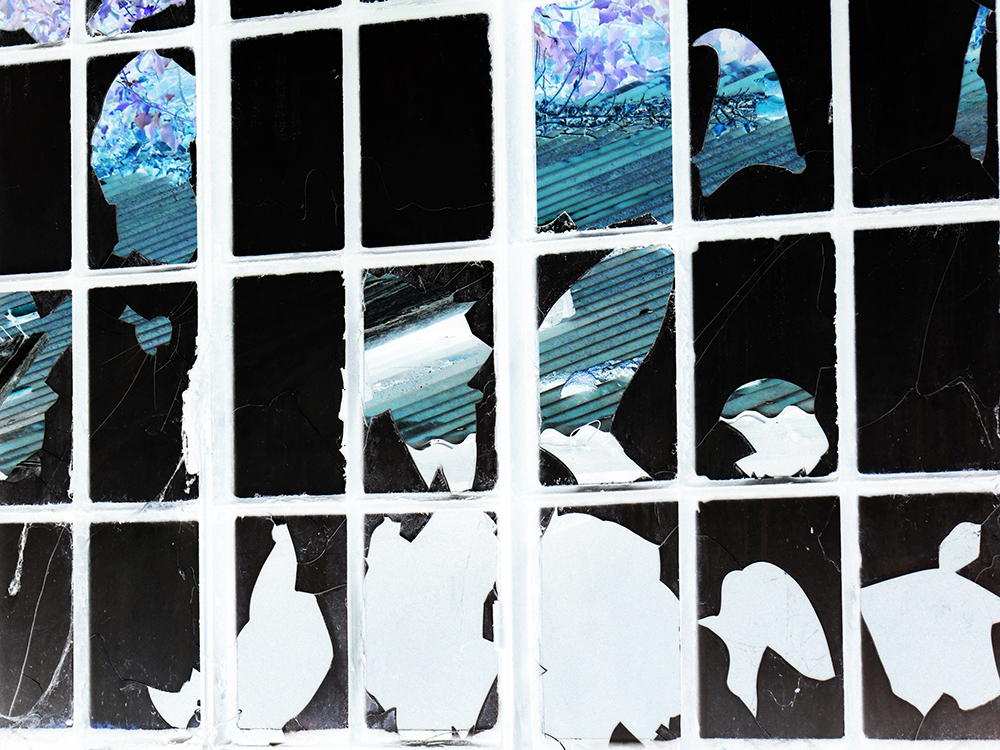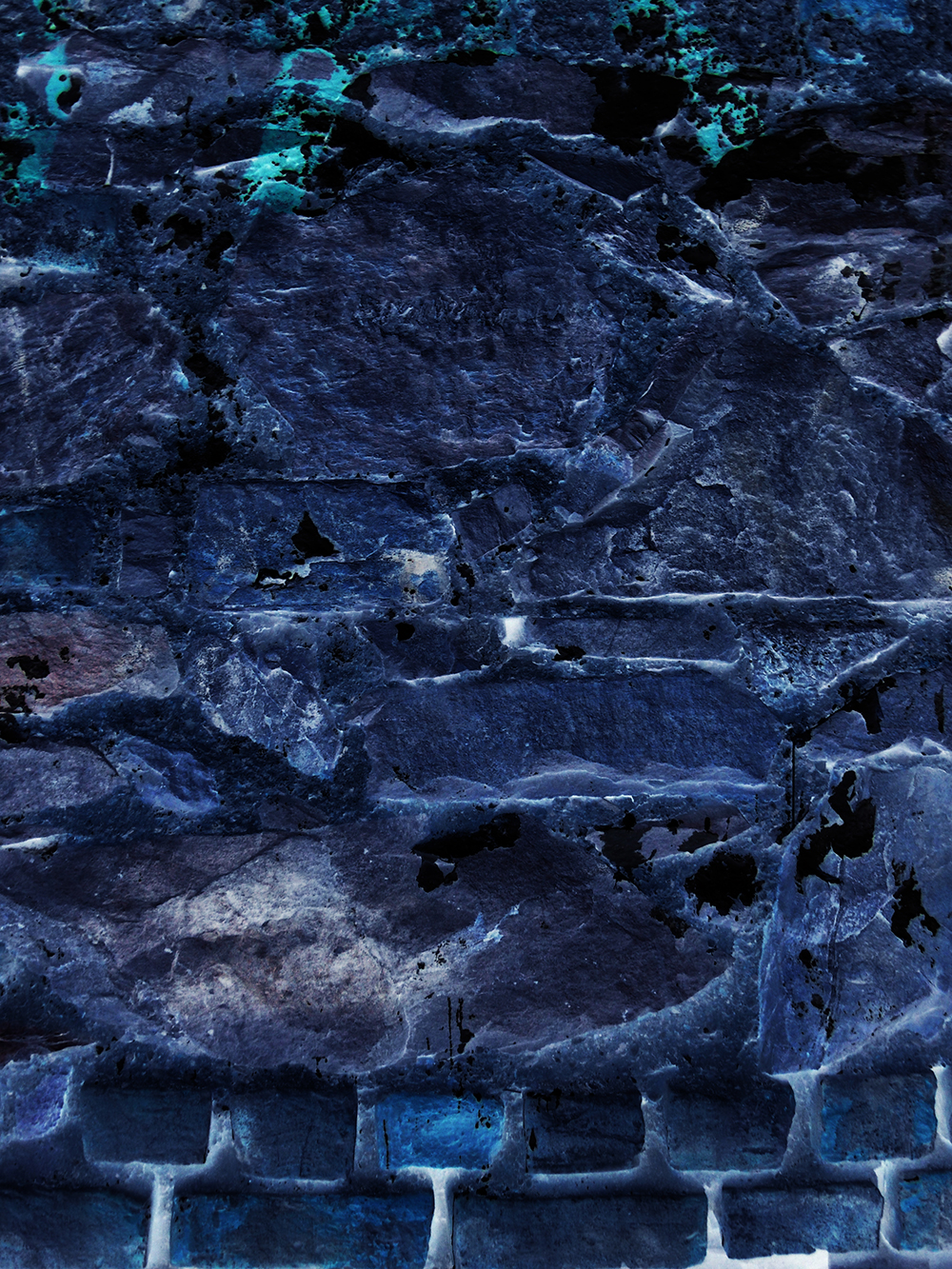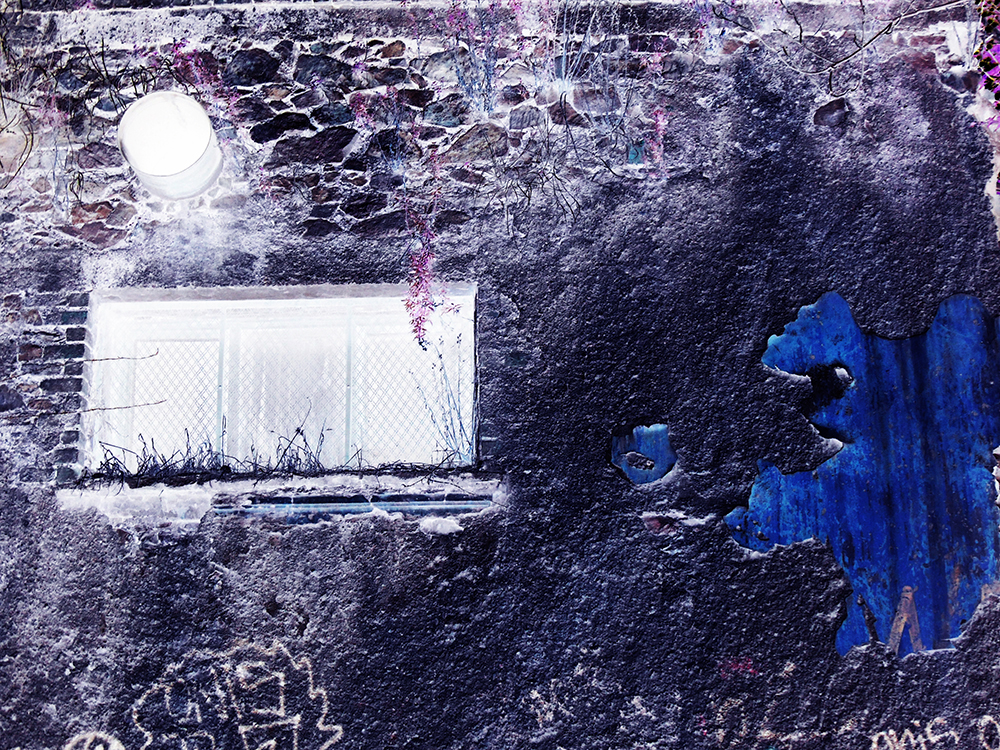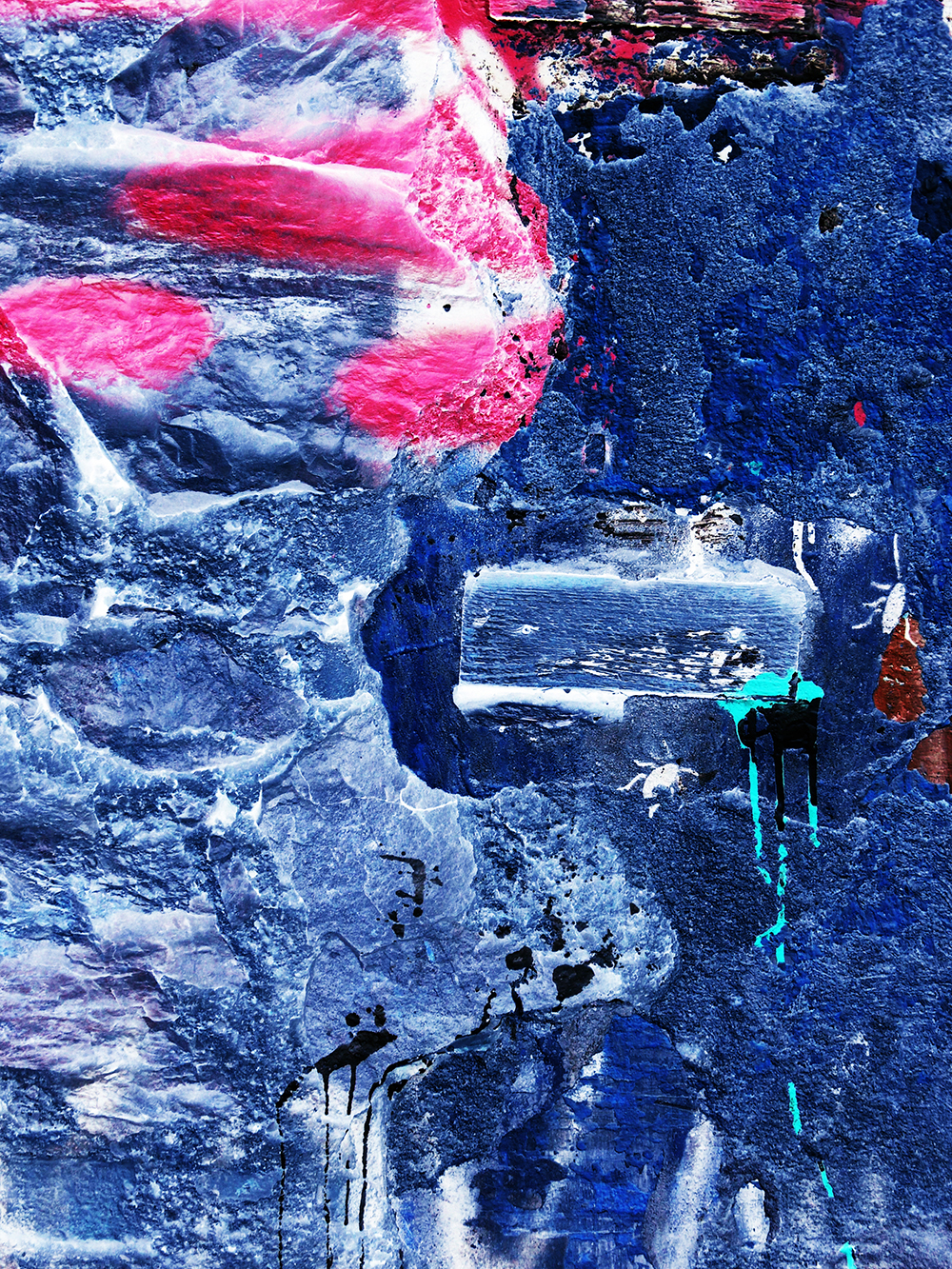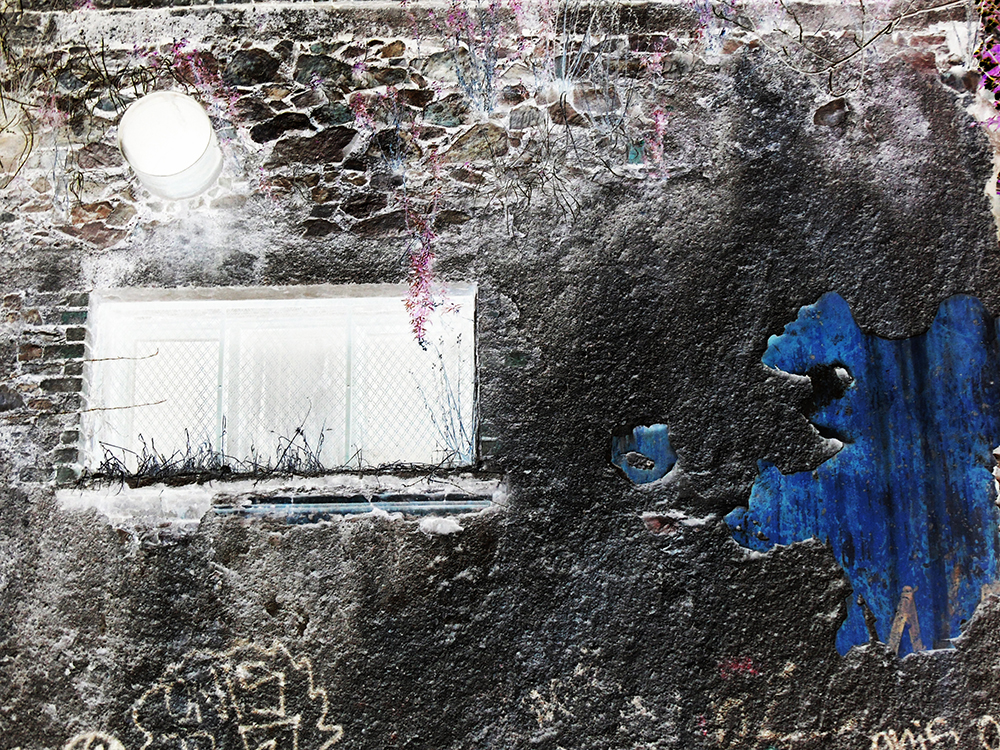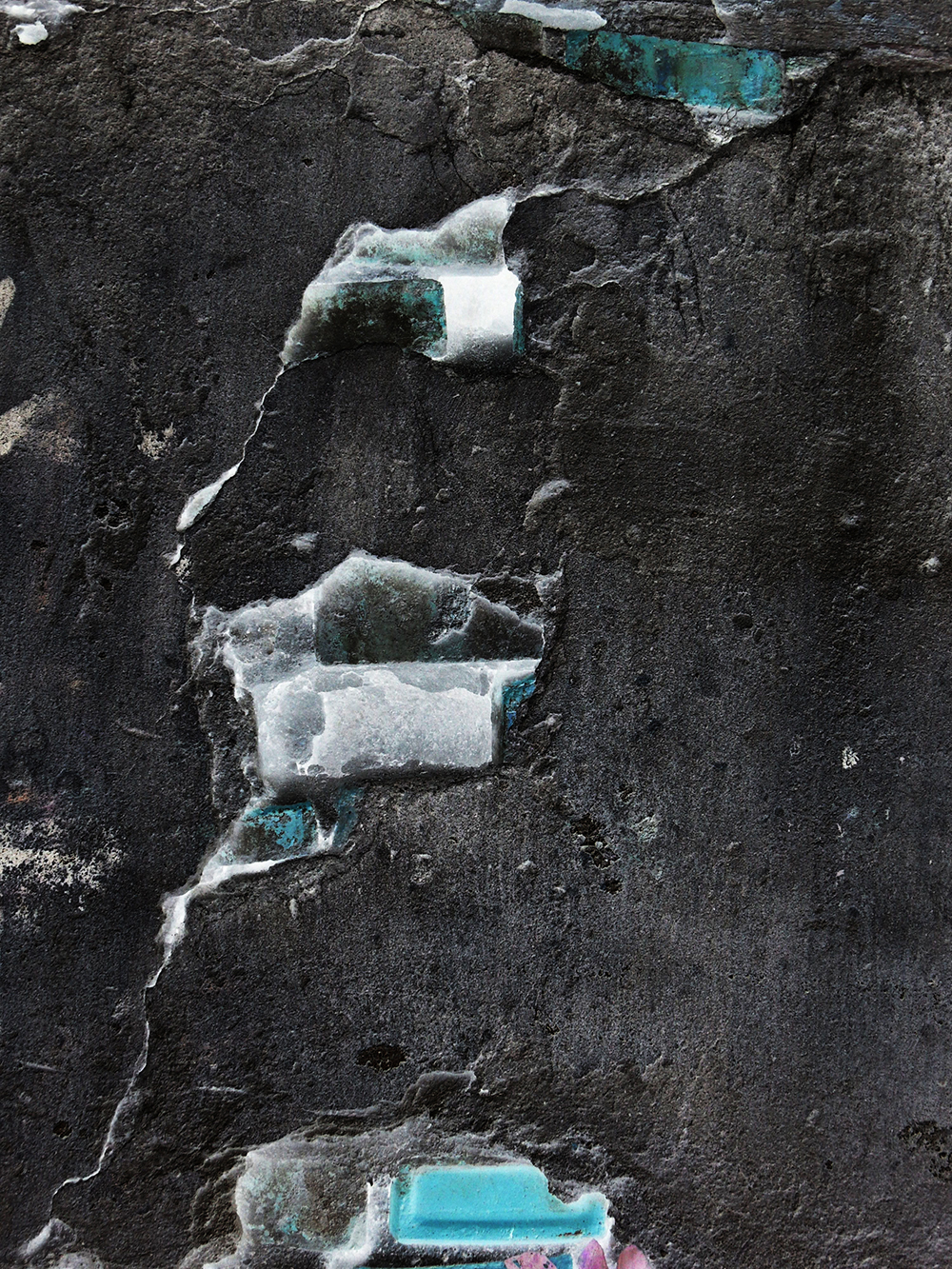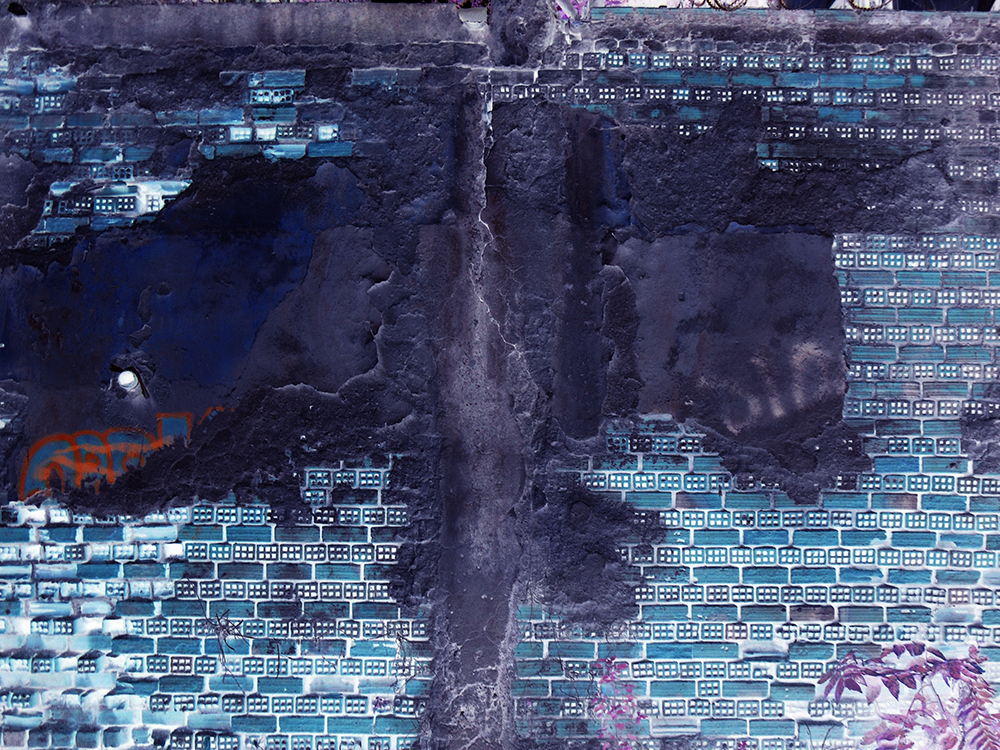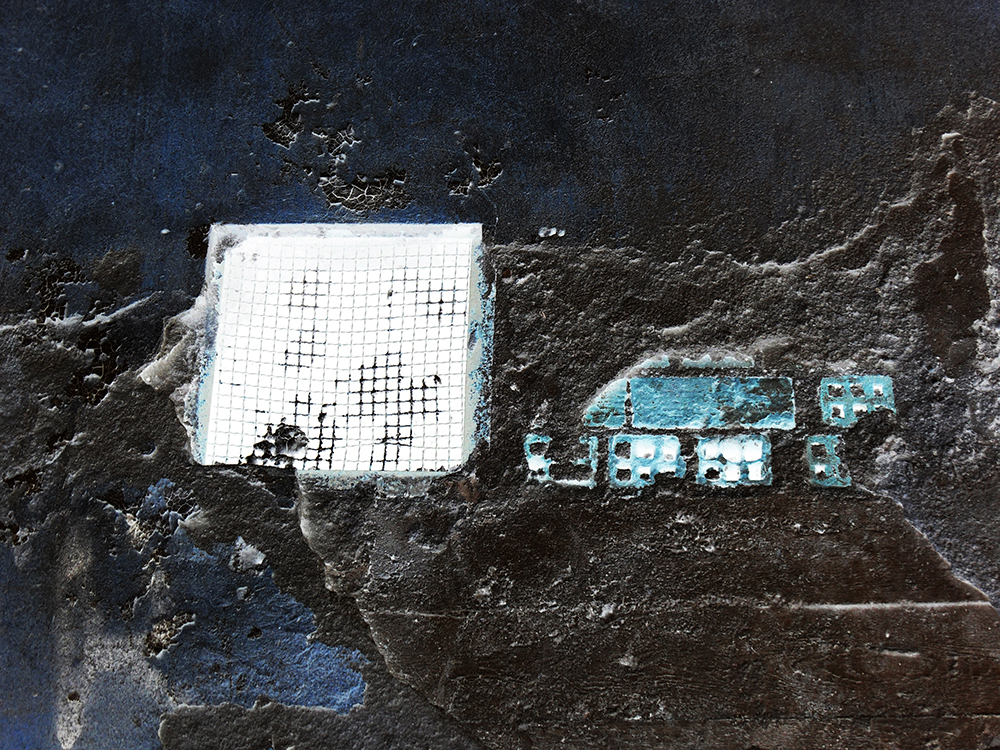IFANET
The charm of the ruins lies in the fact that we eventually feel a human work as a product of nature……
George Simmel: “Philosophie der Landschaft”
It was my intention to create a registry of recorded “decay” by creating footprints of molded latex directly on the surface of the derelict buildings. This registry of “decay” is an attempt to capture the absence of human interaction as well as the abstract forms that random agents such as nature and polymerization of construction materials can create on buildings. These patterns are infinitely more elaborated and invariably more structured than any intentional creation of an artist.
Nature slowly occupied the site’s decaying buildings and open spaces and filled them with cracks and vegetation.
The signs of decay on the IFANET buildings imprinted on latex canvasses as exposed to the viewer’s gaze do not contain the life of the ruins, or any other effort to record findings of post modernism “archeology” but they depict the pause of “Time” through abstraction. The representation of time is rarely depicted and only scarcely recordable in art. While “Time” is imprinting and shaping the space on a surface of the ruined walls, the latex imprints add a forth dimension that of temporality.
The imprints are neither a reference nor a translation of an idea or emotion of any given artist’s idealism. They are only plain commentary to themselves to nature and to the passage of time – their random creators.
